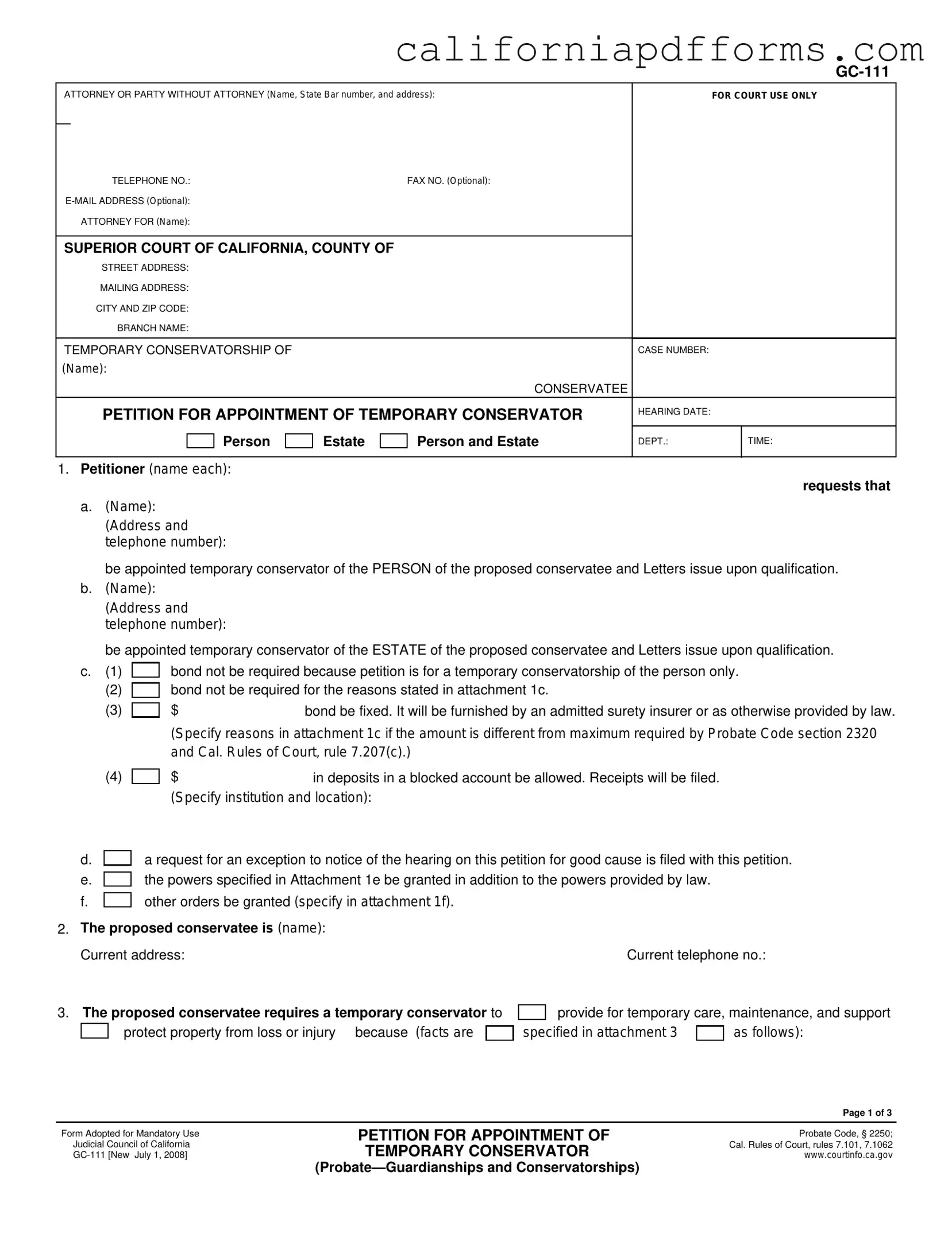Download California Gc 111 Form
The California GC 111 form is a legal document used to petition for the appointment of a temporary conservator for an individual who may be unable to manage their personal or financial affairs. This form outlines the reasons for the petition, the proposed conservator's qualifications, and the specific needs of the proposed conservatee. Understanding the nuances of this form is crucial for ensuring the protection and care of individuals in vulnerable situations.
Ready to fill out the GC 111 form? Click the button below to get started.
Open Your Form Online
